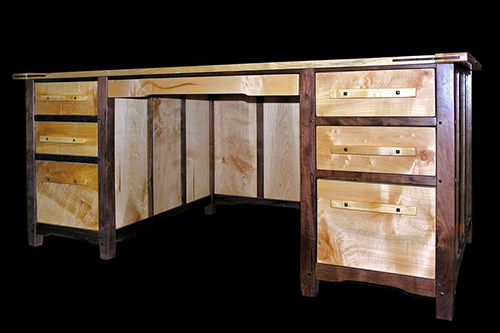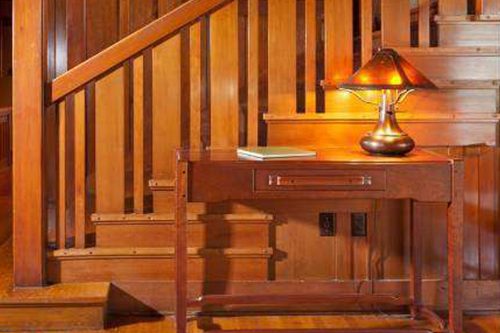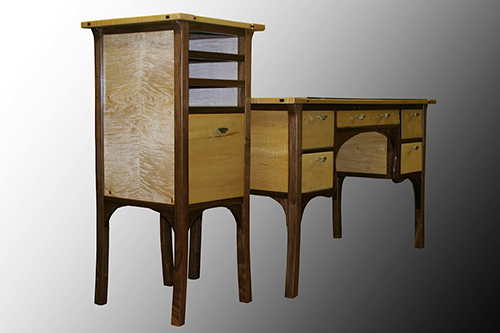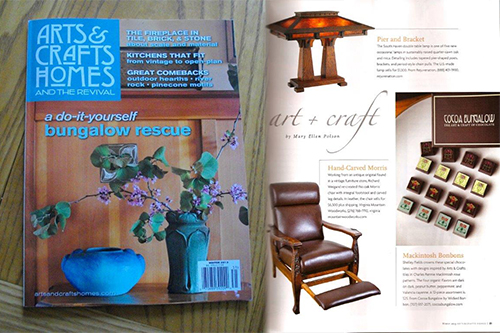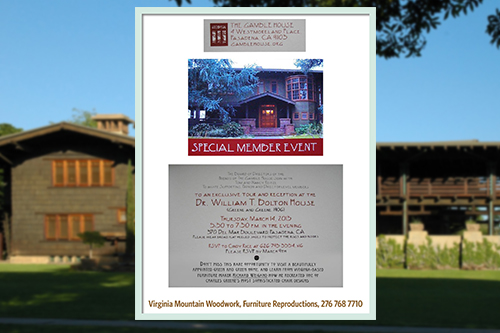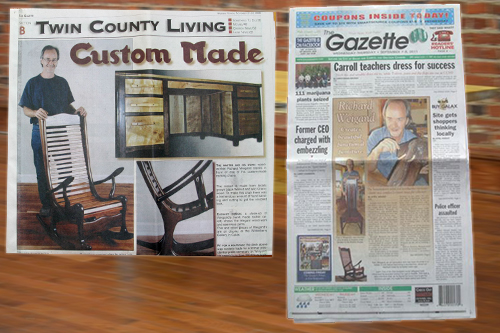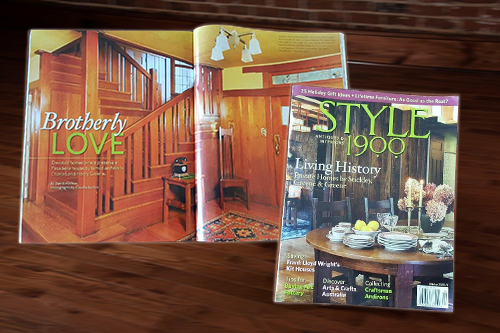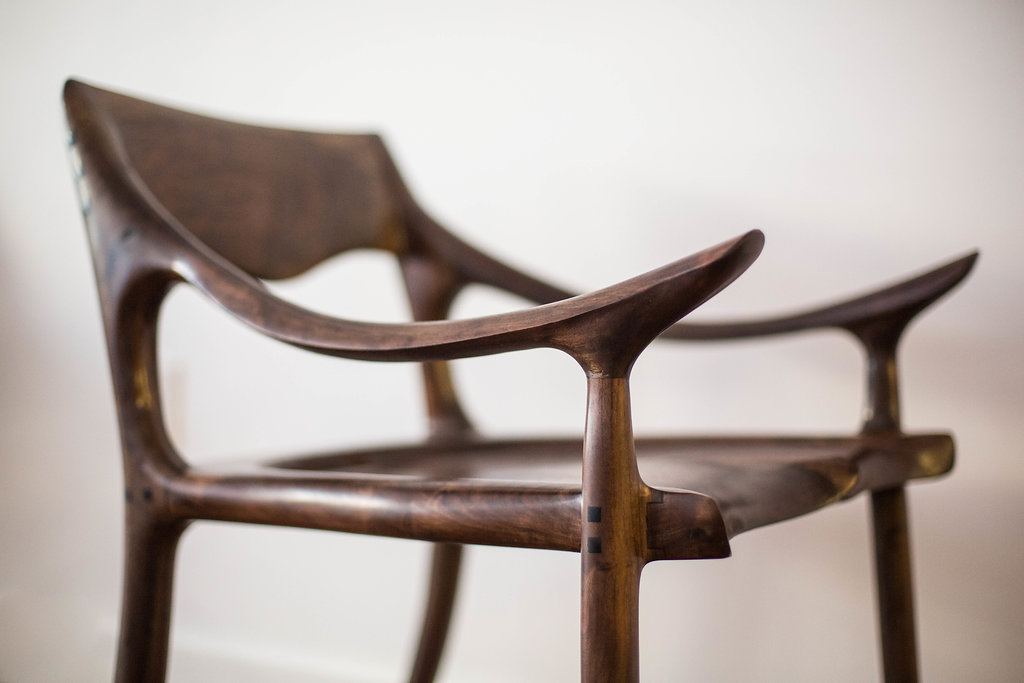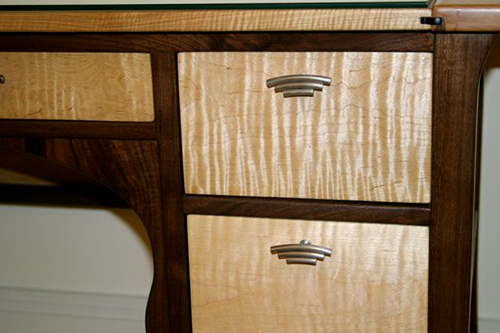“The purpose of life is work, and work is a game; and success in work is not measured in money, but in the intellectual exercise, the product itself, and in the appreciation of others.”
-Richard Weigand
ABOUT RICHARD WEIGAND FURNITURE MAKER
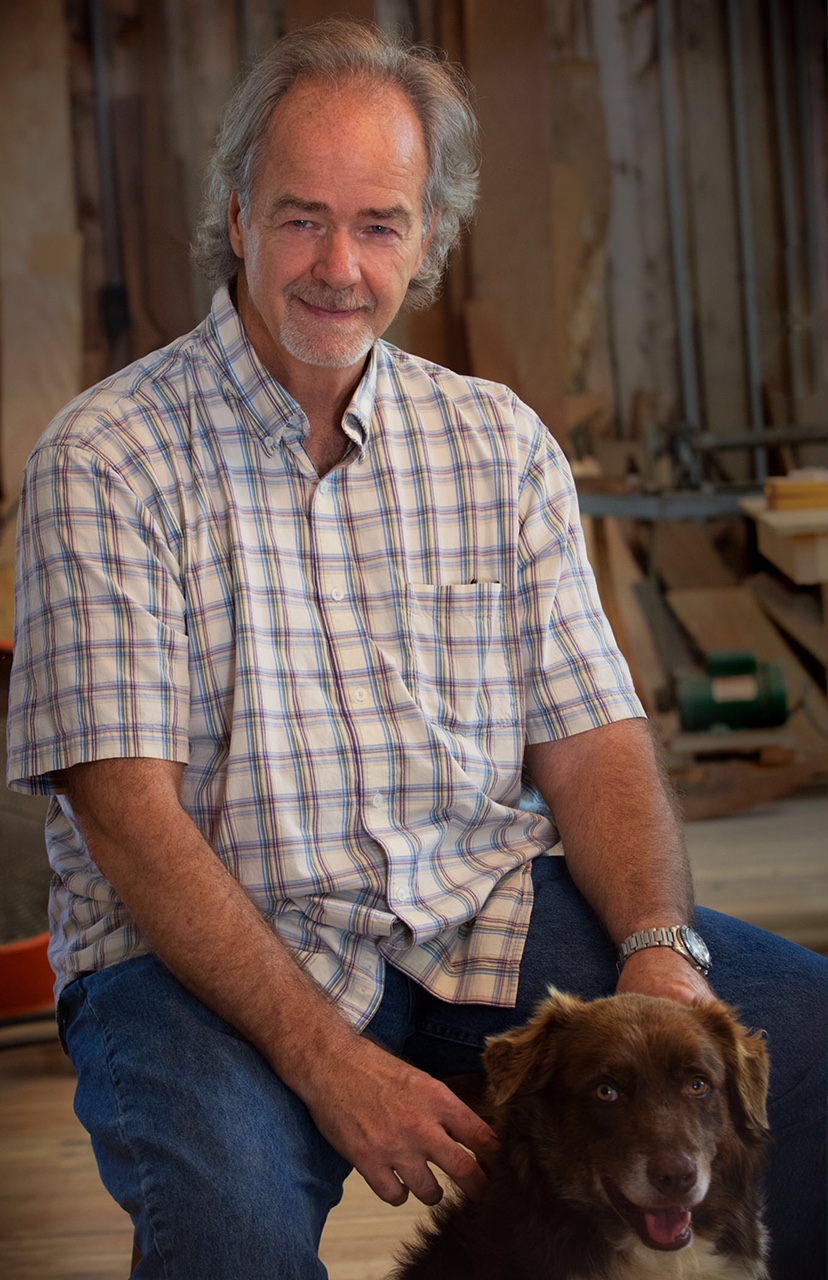

According to Joseph Campbell and other thinkers, we all need, read, and know about the hero’s journey,” a universal and universally studied way to recognize where the subject – man, idea, nation – begins, how it moves forward, and where it lands. Only some of us are aware enough to recognize our own voyage and muster the time and effort to study it.
The journey of Richard Weigand from child to artist, craftsman, and entrepreneur, has been shaped by exposure to art and artists, by the long practice of skills, and by self-examination. It has culminated in his current work with wood.
His early life and formal education in the Great Northern Plains states of Minnesota and North Dakota instilled in Richard a dedication to honesty, an understanding of structure and mechanical function, and a visceral appreciation for nature and natural materials. He also absorbed the sensibilities of those whose art surrounded him while he worked in the Rourke Art Museum in Moorhead, MN, as well as those of his early mentor, James O’Rourke.
Later stages in Richard’s journey include working as a two-dimensional artist, drawing and painting; and as a potter and ceramic sculptor. He has traveled around the world to assist others by counseling and facilitating their journeys, and has worked with wood in furniture construction, turning, and in architecture.
Richard says, “As an artist, you have to produce and produce and produce. I keep improving my skills, keep learning, and within that range of production I have made pieces I like and some pieces I like better than others. It is sort of a chase after perfection.”
“The continuing challenge,” he says, “is the craftsmanship. Art is an on-going exploration, a journey towards beauty, and getting there through skill.”
From these experiences Richard has won mastery and understanding. “Somewhere along the line I learned… you can live with beauty. What’s beautiful to me is beautiful to me; what’s beautiful to you is beautiful to you. There’s no right or wrong to that.” Richard has discovered that one component of beauty is “hands, the work of hands in an act of creation, the impact of hands on a made thing.”
“Put your hands to work on a thing and care, care about every aspect as you shape it and make it. That’s important.”
These steps have led Richard to where he is now: in the mountains, surrounded by farms and forests, ready to use what he’s won to bridge the gaps between life and art for his customers. He uses locally grown and harvested wood and “live edge” wood slabs to produce bespoke items for clients. Lately he’s been working on salvaged wood and barn wood industrial office furniture pieces for a client in Maryland while readying himself for the next foray in the open frontier of growth, in another stage of his journey.
Noteworthy Commissions and Honors
Arts & Crafts Style Desk for Mike McCurry, Washington DC –
The artist was asked to produce a piece of furniture using wood from a maple tree that stood in the client’s yard for many years. His children had grown up with the tree as part of the landscape of their lives, but when it came time for an addition to the home the tree was so close, it had to be removed. The family had it milled in hopes of having some memory of the tree only in a different way. A desk was decided on, maple with eastern walnut accents, knowing it would be useful as well as beautiful – just as the tree had been. The desk was positioned in the home against the exterior wall – just where the tree had stood.
Greene & Greene Designed Entry Hall Furniture for Tom Reitze, Owner of the Bolton House, Pasadena CA –
The furniture maker was commissioned to reproduce the entry hall furniture for the Bolton house designed by brothers, Charles and Henry Greene. in 1907. Old growth mahogany was found and used as it was in the original furniture, two chairs, a side table and plant stand. The original Craftsman-style chairs, not only demonstrated the Craftsman design standards for elegant simplicity, quality of materials and construction, and of function being well met, but also added a sophistication of design that translates into complex angles, unusual proportions and subtle, nuanced decoration. As an example, the chair is a single perspective chair with no two pieces being identical and no 90 degree cut in the entire chair. To reproduce all these elements, Weigand began with meticulous measurements of an original chair (currently displayed in the Huntington Library, San Marino, CA.), continued with several full-sized prototypes, and ended with a near-perfect rendition of the classic chair. A museum quality and approved duplication of historic Greene & Green designed furniture.
Art Deco Inspired Desk and File Cabinet Unit for Philip and Charlotte Hanes of Winston Salem NC –
With Weigand-designed and -crafted furniture, there is no such thing as “utilitarian.” Only a true artisan can receive a commission for work-room pieces such as a desk and a file cabinet, and produce pieces that not only function as required but also are sleek, graceful, and “modern.” Curly maple with eastern black walnut accents. As the owner asked, “Who would ever think a file cabinet could be such a work of art?”
Articles
Fairing The Curve
“Fairing a curve” is a term that comes from boatbuilding — a very specialized subset of woodworking in which joinery, science, function, and design play important roles but also in which art is of primary consideration. A boat that is beautiful is also a boat that slips through the water with grace and sureness. So it should not be unexpected that a concept that combines function and skill with an almost indescribable esthetic has risen from it.
Fairing a curve means adjusting the shape of a not-straight line so that it is both useful to its function and pleasing to the eye of the viewer. Some curves are “tight” like interrupted circles and seem to hum a high-pitched, tense tone; others are large and loose and seem to sing low, bass notes.
If all the points in a curve are the same distance from a center point then it’s called an arc and it can be measured and easily replicated. If the points on a curve change over its distance but do so in a regular pattern and the pattern is repeated at each end, it’s an ellipse.
But if a curve – as often seen in nature and in art — is free-form, changing over its distance, being wide and open here and tighter and more controlled there, yet is still active, graceful, and so appealing that it draws the mind and hand of observers to touch it, then that curve has been well “faired.”
Richard Weigand says that to fair the curves in his woodworking projects, he looks at the shadows. “Light shows the hard line. If you have a hard shadow, the curve is not properly faired. If it’s properly faired you don’t have black and white, you have a gradient scale of gray. Having both hard lines and faired curves gives you the drama; an artisan has to decide what to leave hard and what to fair. When it’s all properly completed there’s no single reference point, but just one entire piece, a thing that is made of and that makes use of both kinds of effects.
“On furniture, you want to fair any curve. Even if it’s a small curve, you put your hand on it and follow it up and down and you can tell if it’s faired. It feels continuous; there’s nothing abrupt.
“In certain pieces there are ‘hard’ lines that are intentional and that’s okay. But a hard line that is not intended to be hard, that’s a problem for both the maker and his customer, and it’s difficult to explain though it’s easily sensed.
“A customer will feel that something is not quite right but he can’t put a name to it or explain to someone else what the problem is. You might go to a show and like one guy’s chairs but you aren’t interested in buying one; but then you walk into another person’s display area and you fall in love with a piece. That difference, even though it’s difficult to explain or to put it into concrete language, is important; we know it and recognize it, but we can’t quite put a name to it.
“Art is the spiritual part of woodworking. The other part is the practicality of the building process and the functional aspect of the piece. There’s always a balance between what you are trying to say aesthetically and the practicality of the piece — there’s always a compromise.”
It’s very much like boatbuilding, where the builder has to combine the beauty of the form with the function of the object; when smoothness has to be met with sturdiness without either effect being shortchanged. It’s a gentle tension, an honest compromise. It’s fairing a curve.
Fibonacci
In Italy in the year 1202, Leonardo Pisano Bigollo published a text on mathematics that became the standard throughout the known world. While his ideas have been applied to many modern uses, two in particular have retained their importance through the more than 700 years since. One is the use of Arabic numerals (as opposed to Roman numerals), and the other is the delineation of the Fibonacci sequence: a series in which the numbers show consistent geometric growth, such as 1,2,4,8,16,32, etc.Over the ages, people have discovered that the Fibonacci sequence applies not only to mathematical calculations, but also to patterns in nature, spirals, self-similar curves, the ancient Greeks’ “Golden Mean” and many more. They have come to represent a kind of perfection in artistic proportion and design.
Fibonacci discovered a repeating proportion in nature. Proportions are integral to beauty. You look at a series of objects and you assume your preference for one of these objects over another is entirely objective, but it’s not necessarily, completely, so. It is very likely that one has a better proportion and when you investigate you’ll usually find it’s the Fibonacci 1.618 ratio at work.
Fibonacci proportion bridges from physical to non-physical. When you use those proportions, you’ll have a satisfying naturalness to your work – whether it’s a painting, a chair, a house, a car, or anything. They all have proportions and that 1.618 [ratio, Euclid’s and Aristotle’s Golden Mean, and Leonardo DaVinci’s Divine Proportion, which are all based on the Fibonacci Sequence] can be found in things that are strikingly beautiful. I don’t [consciously] use it all the time but having become aware of it, I don’t neglect it. I formally measure it in when I get stumped.
I think it’s where the real beauty is. When I look at something that is naturally beautiful, it’s not a fad; it has a lasting quality. I think the “Art World” will go after things that are different; not necessarily that are beautiful, but just different. Newness can create an effect on others. Everyone gets excited about the differentness of it. But if you succumb to the fad and buy into it, your purchase will quickly become dated. Natural beauty is lasting. It’s classic and it never goes out of fashion.
On Taking Commissions
I believe taking commissions makes me a better artist.
When I get a commission from a client, I have to duplicate what he wants and that’s really important to becoming a good artist, to be able to fit a desire to fact, to take a vision and make it reality. When I have to look at what a client likes and what he doesn’t like and find an aesthetic in that, and I’m able to make it happen, that’s true artistic ability.
It’s often difficult to get a clear understanding of what someone else is really looking for. Someone can say he likes a certain style, but that doesn’t tell you what aspect of that “style” is the germ of the appeal for him: is it light or dark wood, or shiny finish, or ornateness or a “clean” look? It stretches my imagination and gives me a different point of view, to try to understand a client’s perspective and desire. It puts my ideas against the customer’s parameters. And I have to learn to create an effect in a different way.
I think it’s not as important to be able to duplicate a known style, as it is to come to an understanding of what attracts a client to a certain style, and then be able to incorporate that in a piece made for that client.
And then, economics comes into it. Those artists who say, don’t sell out, just follow your imagination, do what feels right to you… when you have an artist doing that, just doing what he wants to do with no regard for the marketplace, that’s when economics comes to view.
The artist who does only what HE WANTS to do is indulging himself, but the activity is not economically sustainable, and it’s usually not making him a better artist, not pushing his boundaries in directions that he might never have gone without the nudge from this other person. If you want to get better at what you do, sell your work, listen carefully to what the client wants, and work to produce that for him or her. You’ll create a great effect on them, while expanding your own skills. Don’t worry about whether it is perfect or not; just work to give the client what he wants. Then all will be well.
Wabi Sabi
The Japanese concept of wabi sabi is ancient, deriving from even more ancient Chinese words. Scholars agree that wabi originally meant “the loneliness of living in nature, remote from society.” Sabi meant “chill,” “lean,” or “withered.” The more modern, more lighthearted meanings include the ideas of rustic simplicity, freshness, or desirable “quirks” that arise in an object during its making, plus the wisdom of age – especially as shown in the marks of use. Art critics often use the short-hand definition, “flawed beauty.”
Wabi sabi speaks directly to craftsmanship and indirectly to beauty. It appreciates the hand of the maker and finds beauty in that. It’s one reason we don’t find beauty in plastic and machine-made things; there’s no sense of human touch in those things, no link between the person who created it and the person who acquires it.The basis of wabi sabi is the beauty of craftsmanship – craftsmanship as opposed to anonymous, machine production.
Wabi sabi can be beautifully expressed in wood. It can be part of the wood’s natural growth and formation, and it can be discovered and brought to focus by a craftsman, or it can be added to the project by the craftsman.
Here in Grayson County, we live surrounded by forests and close to saw mills that utilize the wood from those forests. Here, I’ve gotten to know loggers, and I’ve learned that the logging industry wants straight-grained, tall trees that don’t have branches or crotches or “character.”
They send the logs to the mills and they saw them into identical boards and the boards go to furniture factories where they’re cut, glued and stapled into a mass of identical pieces.
Straight-grained wood can be anything – a leg of a chair, a back of a chair, it can be anything. No decision has to be made; no one had to look at any specific, unique piece of wood and say, “this would make a good rocking chair arm, because of the curve in the grain.” No craftsman had to have the knowledge and experience to know that while that piece of wood would make a fine rocking chair arm, it wouldn’t do for a table leg at all.
With mass-produced furniture, the hand of the maker is not involved. But when you go to these other trees, the ones that have character, they necessitate that the person using the wood make all kinds of decisions: Can this knot be used in this chair back, is it pretty or not, can I make it more beautiful? Can I take these faults and use them as colors in my painting? With those considerations, you get a perhaps “imperfect” but individual creation, and the harmony or working with the wood’s personality.
In my current work, I’m looking at all this salvaged wood. Every piece, every board has to be compared to the other boards. Does it look good, do I need to change it…flip it upside down, turn it around…how does it look best? The color of that wood, does it look good with the board next to it? Compare that to some automaton in a factory who is stapling pieces of nondescript wood into arms for a couch that no one is ever going to see. There is no art in that, there is no soul in that. With wabi-sabi, you take the faults of nature and couple that with the mind and hands of the craftsman, and you make beauty.
Sustainability
Richard Weigand says he does not regard sustainability as an “issue.” The term’s intent is best exemplified when “it becomes a way of life as opposed to a principal that one is waving a flag over. I believe in the idea of moderation in all things; I know people who say about using trees for making things, cut one, plant one. And that’s a good idea too.”
In woodworking, my operating basis is, it’s not so much a matter of cutting or not cutting trees, but of what do you do with the wood. Use it properly, not wastefully. In the end, you should ask, does the product’s usefulness outweigh the destructive value of cutting the tree? And if the answer is yes, then you’ve done something worthwhile.
I’m not really much of a flag-waver. I’m not trying to promote a political position or a trendy topic of discussion. But utilizing resources thoughtfully is just logical. Simply living on planet earth means you do a degree of harm, but there’s a logical degree to which I can inflict, without being a menace to the world.
The wood I use is gathered up locally, yard trees aged and failing, or storm-downed, or gnarled trees in people’s forests that are in the way of something the people need to do. Those are the trees I get. I once was considering purchasing a tract of forested land, but by the time I got there to see it the owner had had it timbered. All the trees had been cut and hauled away. But there in the middle of the clear-cut field stood the only tree I would have wanted! All around it lay the remnants of the loggers’ work. My tree had no value to the logging industry and wouldn’t have been accepted by the local sawmill. Yet it was the only one that had value to me, with it’s varied forks, burls and crookedness.
I question the sustainability of logging and the furniture industry, as it’s set up for mass production. I question cheaply made products that are thrown away in a year or so.
I want to make use of wood that would be thrown away. I use wood that bigger companies would waste – wood that’s diseased, twisted, not ‘standard.’
I don’t do mass production.
I make products that will give a lifetime of use – or longer – and won’t have to be replaced in a year or two.
The use I make of wood is a “normal” use, a reasonable use, not waste.

Being a Mature Artist
Richard Weigand has reached a plateau where the pieces have fallen into place. For him, environment, relationships, and artistry are matured, fully formed, and available to be brought by his consciousness to play in the activities in which he chooses to deploy them. This is especially obvious in his work as an artist.
Understanding Theory
I think fine artists – painters and those that do not make obviously functional art – for them, there are techniques involved and they have to know them. Take Picasso – he was a great artist, and he knew all the rules of traditional or representational art. And once he had those rules down pat, once he was so good at using those rules that he no longer had to consciously apply them, he could set himself free. Then he became the great artist we admire today.
After a while, that kind of knowledge sinks down into your mind and you use it as you need it, without dredging it up formally and laying it out as a kind of blueprint. So, while you don’t have to look at a chair that you’re in the process of building and ask yourself, “Now, does this curve meet the ratio of Fibonacci’s Sequence?” your heart or your subconscious tells you that it is beautiful, or apt, or what you’re aiming at, and it’s successful.
Mastery of Skills
I remember making pottery. Sometimes, I would make a piece and when it came out of the kiln, I didn’t like it. So I had to think about why I didn’t like it, and try again to produce the exact piece I’d had in mind – the form, the weight, the glaze, everything. And it takes a lot of time and trials, to get to know exactly what you have to do, to produce a certain result. You have to try again and again, shifting things just a little bit each time.
But six months later, maybe I looked again at that “disappointing” piece and maybe I kind of liked it. Maybe it hadn’t come out exactly the way I’d wanted, but when I was able to look at it with un-biased eyes, I could see it as something that was just itself, not as a project for which I’d had a specific vision that had to be met. Six months later I could appreciate the craftsmanship and beauty of that specific object, and not see it only as an effort that hadn’t met its mark.
Doing that, time after time, until you get to the level of both having the skills to consistently produce the effect that you want, and of being able to look at a piece you’ve made as a thing unto itself and not just as a piece that did or did not match your vision of it, that is the mark of truly mature artisan.
Relationship With the Materials
I think when you are leaning wood, like learning anything, you start out struggling. You have to begin with learning your materials and your tools as well as your techniques. You learn them and you accumulate a language. The more you speak that language, the better your use of the materials becomes.
There are lots of guys who use marking knives to draw their lines. They think leaving that line in there is a sign that the object is handmade. It is, but I just don’t like it; I use a pencil and erase the line so it’s not there. It’s just my taste.
Lots of choices that have to be made. You can’t help but change as you go along and learn the tools and what’s important and what’s not important.
Working With Clients
If you put your work in front of people and get people’s reaction to it, you take that in and are affected by it. It’s what an artist needs to do. When you do it, your work will change.
I told one client that I’d found a really nice board to use in his project. I cut strips off that board and laminated them to the less-pretty part of the board so the drawer fronts were harmonious. He wrote back to say he had talked to a builder about what I was doing and they agreed that 95% of people wouldn’t notice or appreciate it.
I appreciate that kind of feedback more now; I didn’t know enough when I was younger to appreciate the finer subtleties and differences, and my clients have helped me reach that understanding.
Everyone is an individual. I talk to people about their lives and find that everyone’s life is interesting and everyone is different. No two people are the same, so why should chairs be the same? Why shouldn’t a person have his own chair that’s distinctly his? The only way that happens is by someone like me making that chair, one of a kind, for that specific person.
What is Beauty
Appreciation of beauty is part of our natural makeup, but it’s affected by a lot of things, like how you’re brought up… It comes down to a way of seeing. You can look at a piece and see that its color is perfect, that it’s fibonaccially perfect, that it does everything just right. And you see that it’s beautiful. Then somebody else comes along and looks at it and says, “I don’t like that.”
And that’s okay. It’s just their standard of beauty.
Everyone appreciates beauty, but nobody agrees on what is beautiful. There’s a house near us that is junked beyond belief and I think, my god, how does someone live in that? But I guarantee you, in some way and to some degree, the owner sees all that junk as beautiful. I have studied the mind, and the ways the mind works. I think he leaves that stuff on the ground because that’s where it was when he was done with it, and when he needs it again, it will be right there. It’s beautiful to him because it’s what he needs and uses; he probably looks at that and thinks or feels, man, am I rich.
The standard for beauty is what the person sees as beautiful.
People should have beauty in their lives – whatever it is to that person. I like helping people get that, something that is beautiful by their own standards. I enjoy helping others experience that feeling of being rich, that can be imparted y being surrounded by beauty.
You don’t have to take what is given. For example, you buy a house, it’s already built; it’s what you are given – the house the way it is, the land the way it is. You can paint the house colors or remodel it…. You can just take whatever it is you have and make it your own in terms of beauty. Here in my house I worked for a year and a half on the inside to make it prettier and more to my liking. On the outside I added the pond. If I were younger I’d be trimming the trees, building bridges over creeks…
The simple thought is, if beauty gives you pleasure you should surround yourself with it. The challenge is, to do something to create beauty or turn the things you are given that you see as not beautiful into something that is, in your opinion, beautiful.
The challenge of life is to make something the way you want it. Nirvana, that perfect place – I’m not sure it would be fun. There’d be no challenge.
Custon Table Following the Designs of Charles and Henry Greene – Old Growth Mahogany
Sold
Custom Executive Office Chair and Desk – Eastern Walnut
Sold
Modern Sculpted Chair – Eastern Walnut
$2500
Art Deco Style Desk and File Cabinet Unit – Curly Maple and Walnut
Sold
Reproduction Hutch – Eastern Walnut
Sold
Sculpted Rocking Chair – Cherry and Eastern Walnut
$5900
Nakashima Style Bench
$2300
Maloof Style Rocking Chair – Maple
Sold
Coffee Table Chest – Eastern Walnut
Sold
Side Table – Cherry
Sold
Turned Bowl – Maple & Eastern Walnut
Sold
Rustic Coffee Table or Bench – Cherry
$1900
Industrial Oak Conference Table, Desk and Barnwood Door
Sold
Handcrafted Wood Keepsake Boxes
Go to our Etsy Store for more rustic keepsake boxes
Live Edge Desk – Eastern Black Walnut
$6900
Bedside Chests – Eastern Black Walnut
Sold
Live Edge Table – Eastern Black Walnut
$2900
Arts & Crafts Desk – Maple & Eastern Walnut
Sold
Reproduction Antique Morris Chair – Oak
$6000
Historic Reproduction Greene & Greene Bolten House Entry Hall Furniture
Old Growth Mahogany
Sold


